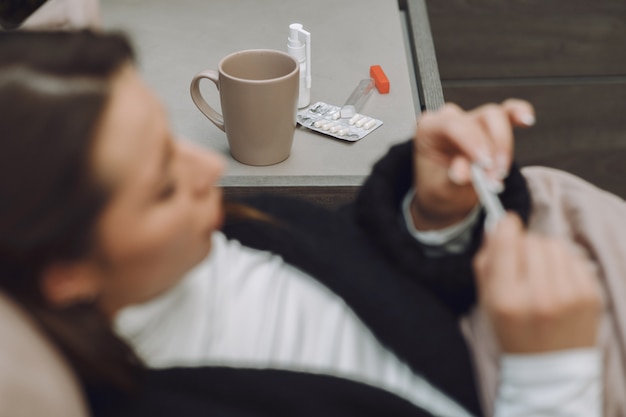
Health care providers can help you quit smoking through the use of medications that do not contain nicotine and are not habit-forming. These medications work differently than nicotine patches, sprays, gums, or lozenges. They can help you deal with withdrawal symptoms and prevent you from starting to smoke again. These medications are most effective when combined with a solid quit-smoking program, which includes deciding to quit, setting a quit date, having a plan to handle cravings, and getting support from a doctor, support group, or counselor.
About 46.5 million Americans smoke, and 70% of them want to quit. Each year, around 17 million adults in the U.S. make serious attempts to quit smoking. Research involving over 6,000 published articles has identified two key themes in smoking cessation:
1. Using medications approved for smoking cessation more than doubles the chances of quitting.
2. The effectiveness of these medications increases when combined with behavioral interventions.
Many prescription drugs can help smokers quit. Some can be used with nicotine replacement therapy (NRT), and they generally need to be taken before your planned quit date. Smokers who are heavily dependent on nicotine should consider NRT or drug therapy to quit. Indicators that you might need medical help include smoking more than one pack a day, smoking within five minutes of waking up, smoking while sick, getting up at night to smoke, and smoking to relieve withdrawal symptoms.
A meta-analysis of research trials found that advice from medical professionals significantly increases the likelihood of quitting smoking. Comprehensive and clear advice leads to higher quit rates compared to minimal advice. Doctors play a crucial role in identifying tobacco users, advising them strongly to quit, assessing their readiness to quit, and arranging follow-up support.
The U.S. Public Health Service recommends including at least one FDA-approved medication for tobacco cessation, along with counseling, if there are no medical contraindications. Here are some of the medications that can be used:
**First-Line Agents: NRTs**
Five agents have been FDA-approved for smoking cessation: nicotine nasal spray, inhaler, patches, gum, and sustained-release bupropion hydrochloride. NRT helps reduce withdrawal symptoms, allowing patients to focus on overcoming the psychological and behavioral aspects of smoking. However, NRT should be used cautiously in patients with certain heart conditions.
For pregnant women, NRT may pose risks to the fetus, though less so than continued smoking. It is reserved for those who cannot quit using nonmedicinal methods. The goal is to gradually decrease nicotine intake while managing withdrawal symptoms and cravings.
**Nicotine Replacement Therapy (NRT)**
– Nicotine Gum: Sugar-free and available without a prescription, nicotine gum helps reduce cravings. It is unsuitable for people with dental work.
– Nicotine Patches: These deliver low-level nicotine through the skin and are available with or without a prescription. They come in various strengths and should be used according to the number of cigarettes smoked daily.
– Nicotine Nasal Spray: Fast-acting, this spray is absorbed through the nasal mucosa. It may cause initial irritation but is effective for those needing quick relief from cravings.
– Nicotine Inhaler: This delivers nicotine vapor absorbed through the mucous membranes. It is not deeply inhaled into the lungs and may cause mild irritation.
– Nicotine Lozenges: Another OTC option, lozenges help manage cravings and should be used according to the provided instructions.
**Non-Nicotine Prescription Medications**
– **Bupropion (Zyban or Wellbutrin SR)**: Originally an antidepressant, it helps reduce cravings and withdrawal symptoms. It is taken one week before quitting and can be used for up to 12 weeks or more, depending on the doctor’s advice.
– **Varenicline (Chantix)**: This medication reduces cravings and withdrawal symptoms by blocking nicotine receptors in the brain. It should be started one week before quitting and taken for 12-24 weeks.
**Second-Line Agents**
– **Clonidine**: Typically used for high blood pressure, it can also help with smoking cessation. It requires careful monitoring and gradual dose reduction to avoid adverse effects.
– **Nortriptyline**: An older antidepressant, it helps reduce withdrawal symptoms and increases the chances of quitting. It should be started 10-28 days before quitting and requires careful dose management.
**Combination Therapy**
Combining different forms of NRT or using them with other medications can improve quit rates. For example, using a patch for steady nicotine levels and gum for managing cravings can be more effective than using either alone.
**General Advice**
Quitting smoking requires a tailored approach that considers individual patient preferences, medical history, and previous experiences with cessation methods. Behavioral counseling along with pharmacological therapy enhances the chances of long-term success. Always consult with a healthcare provider before starting or stopping any medication to understand the benefits and potential side effects fully. Using FDA-approved medications, with or without combination therapy, significantly increases the likelihood of quitting smoking successfully.